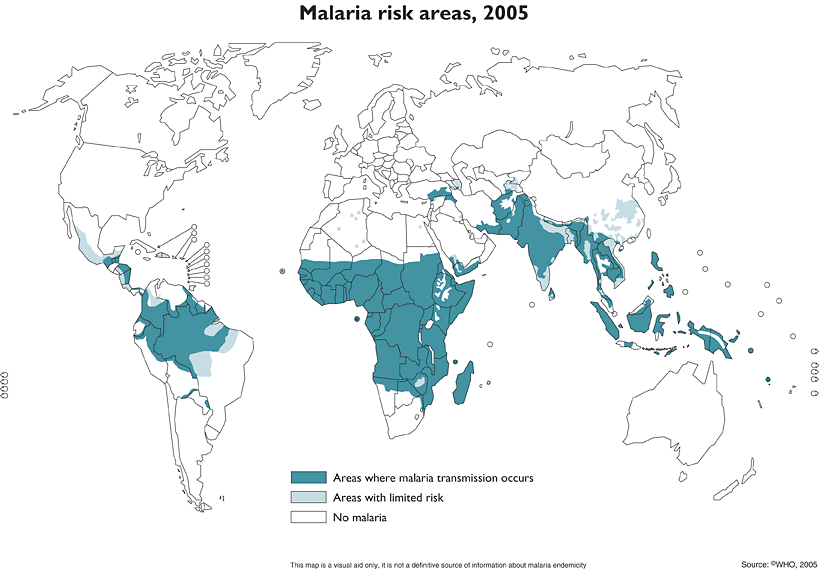Introduction / DDT molecule / Malaria / World War II
Environmental Problems / Insect Resistance / Begin Using Again? / References
- Over 1 million people die from Malaria each year
- Much of Europe and the America’s were malarial until the early 1950s
- Most people associate the disease with developing and tropical countries but it was only recently been eradicated
- Two ways to fight the disease:
- 1. Use drugs such as quinine to treat already infected patients
- 2. Try to destroy the carriers of the disease: anopheles mosquito
- In 1944, DDT was proposed as a way to eradicate Malaria after the success of killing mosquitoes and protecting soldiers during WWII
- It was first used again in Italy. Spraying began in 1945 and by 1948 and after spraying half a million pounds over 135,000 miles, the malarial death in Italy was zero.
- After this success the World Health Organization (WHO) began to implement malaria control programmes in several countries.
- Example of the successes of DDT in Malaria eradication:
- South America shortly after the first spray in 1946, the number of Malaria cases dropped 1/3 from what it was in 1942.
- Sri Lanka began spraying in 1946 as well. In 10 years the number of cases of Malaria was cut from 3 million to 7300 and had eliminated ALL Malaria related deaths. And by 1964 the number of cases was just 29.
- In India it was estimated that around 75 million contracted the disease each year and about 800,000 people died. Through the use of DDT the number of contracted malaria cases dropped from 75 million in 1951 to 50,000 in 1961.
- Malaria was successfully eradicated from 10 countries (4 in Europe and 6 in Americas and Carribean)
- In 1951:
- it was discovered that the anophelines mosquitoes in Greece came back to spraying sites within days
- In 1953:
- it was clinically proven that the anepheles mosquito was physiologically resistant to DDT
- In 1956 the Malaria rates began to rise again because of:
- The successes many countries stopped the intensive spraying because they thought that they had effectively stopped the spread of the disease.
- And because of the developing resistance to the pesticide.
- The World Health Organization decided to blast these countries with DDT where Malaria was increasing to hopefully kill the mosquitoes before they had the chance to develop the resistance. But many third world countries where this treatment was needed didn’t have the capabilities for such a blast.
- Slowly the Eradication campaign turned into control and in sub-saharan Africa it was reduced to a Containment Campaign.
- Then in 1962 Rachel Carson published Silent Spring and the environmental battle on DDT began and it was subsequently banned by the U.S. in 1972.


